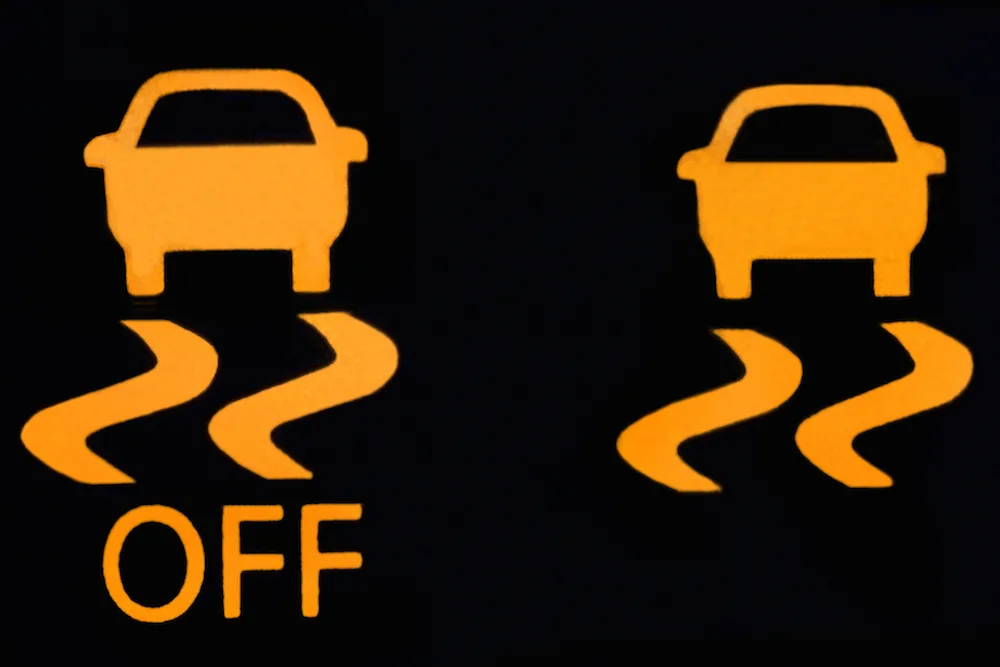The Importance of Traction Control in Cars
Summary
Traction control is an automotive safety feature designed to detect when one or more wheels lose traction and prevent your car from skidding. It does this either by individually braking the affected wheel, or cutting engine power in order to […]

Traction control is an automotive safety feature designed to detect when one or more wheels lose traction and prevent your car from skidding. It does this either by individually braking the affected wheel, or cutting engine power in order to limit rotational speed.
Traction control is enabled when your car starts up unless manually turned off by you. While most drivers should leave it active for normal driving conditions, there may be times when turning it off may be beneficial.
Stability
Traction control uses wheel speed sensors to identify when one or more of your drive wheels is spinning faster than normal and losing traction, and then transfers power away from that wheel in favor of those that still have grip. This enables more safe acceleration on slippery or loose surfaces and even can help avoid sideways sliding during cornering.
Traction control systems work by applying slight braking pressure to wheels spinning too fast, losing traction, or by restricting engine power for tighter turns. They work best when combined with anti-lock brake systems and electronic stability controls to enhance overall handling performance.
There may be times when disabling traction control may be beneficial, such as getting stuck in snow or mud and needing your wheels to spin furiously in order to dig through and find grip beneath. But for most normal driving situations, keeping traction control enabled should remain sufficient.
Braking
Traction control helps your car maintain a firm grip on the road surface by monitoring wheel slip. As soon as wheel slip is detected, traction control will reduce their speed by applying brake pressure or decreasing engine power accordingly.
Traction control systems – whether standalone or integrated with the vehicle’s stability system – use wheel speed sensors to monitor how quickly each wheel is turning. When one turns faster than others, a hydraulic moderator (usually fitted on front-wheel or all-wheel-drive vehicles) activates in response by applying brakes quickly in quick pumps in order to reduce wheel speed and improve traction.
Under certain conditions, disabling traction control can be advantageous. This can be accomplished by pressing a button or using a switch on the dashboard or console; if the traction control warning light on your dashboard remains illuminated indicating its disabling, professional attention must be sought immediately.
Tires
Your car’s tires serve as the main point of contact between it and its environment, and their ability to maintain grip is crucial to controlling it. Traction control works behind-the-scenes to help your wheels gain traction when trying to accelerate or prevent wheel spin (otherwise known as overspinning).
Traction control utilizes sensors similar to your anti-lock brake system in order to detect when one or more tires are spinning, and then adjusts power distribution in order to reduce torque delivered to that wheel or wheels in order to stop or slow their rate of spin. This may involve either braking the affected wheel directly, or by decreasing engine power being directed there – this effect is typically felt as a pulsing of your gas pedal similar to how ABS feels while working.
Safety
Traction control acts to detect when one or more wheels lose contact with the road and to limit how fast those wheels spin. Loss of contact between a wheel and its surroundings may lead to understeer or oversteering in front-wheel-drive vehicles and sideways sliding when fitted on rear-wheel-drive vehicles, respectively.
Traction control works by monitoring which wheels are spinning, then applying brake pressure or reducing engine power accordingly to those wheels to reduce how often they spin – giving your car better traction on slippery surfaces or while accelerating rapidly.
Many traction control systems are linked with stability control to make turning easier in tight corners. To optimize performance, it is recommended that both systems remain on, with only in certain conditions disabling one or the other – typically an illuminated dashboard warning light will indicate when traction control is active.
